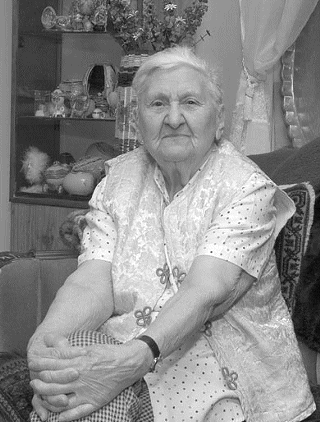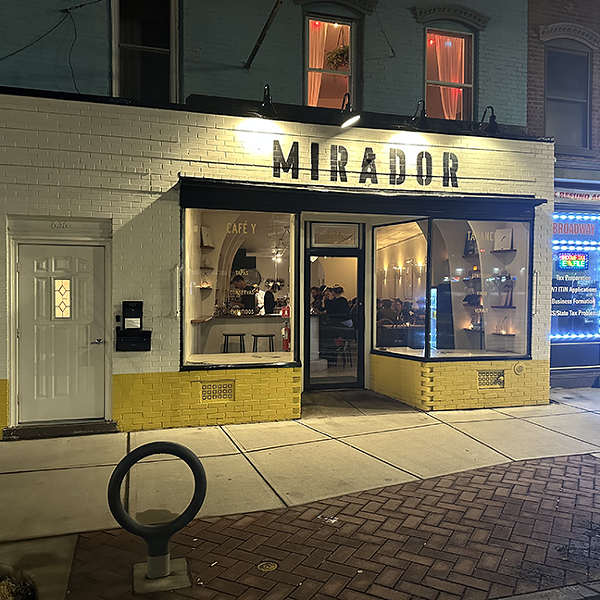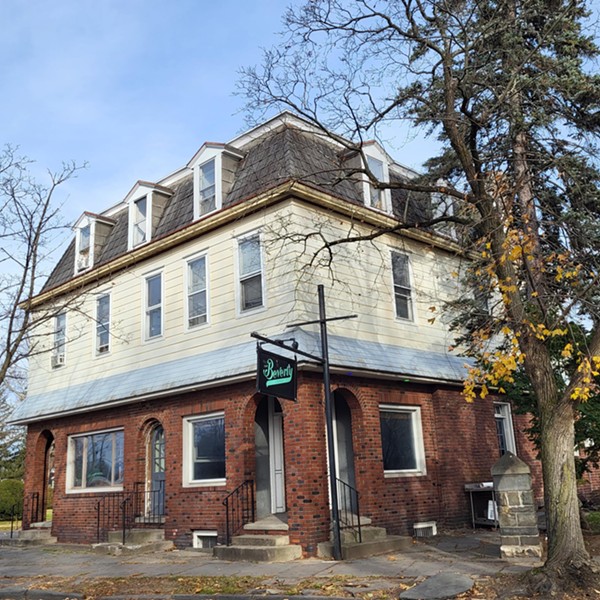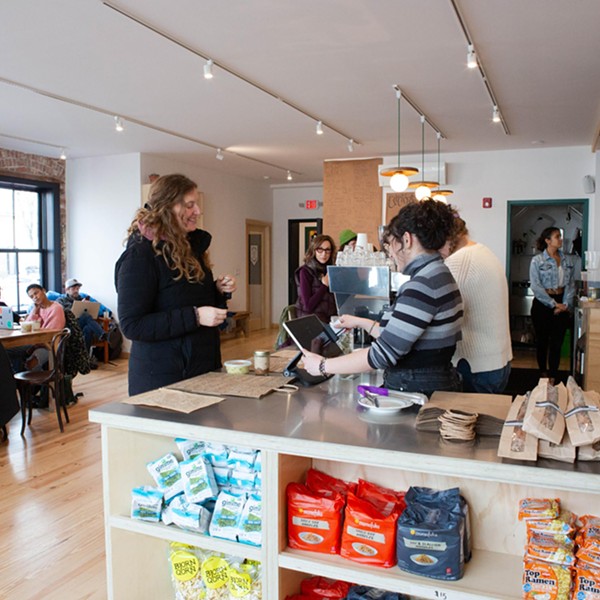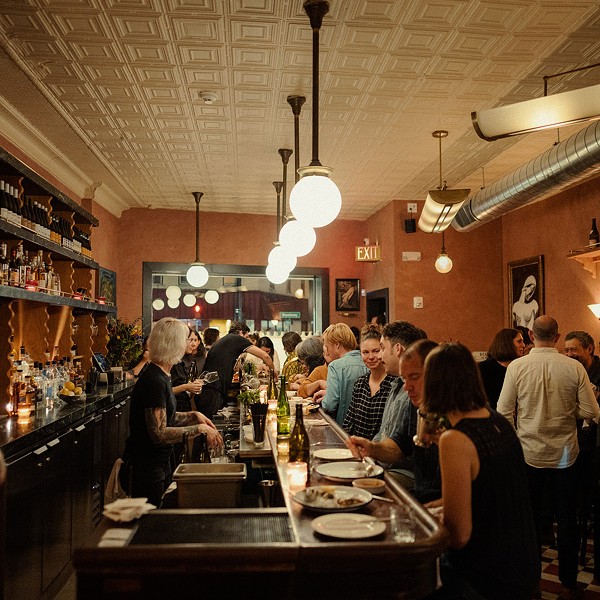Everyone’s an artist at five. In kindergarten, it’s impossible to do wrong with paint and paper or glitter and glue or macaroni or whatever. I’ve not quite put my finger on it, but somewhere along the line, someplace in grade school, most people settle into a pretty staunch “I’m no good at drawing” position, steadfastly refusing to express themselves visually in most any way at all.
And then there’s Luba Donskoj (pronounced DON-skoy). Born in Armenia, she survived some harrowing experiences during World War II. (A transport train she was on with over 3,000 other refugees was bombed, and she was one of only two survivors.) She married a Russian she met in a displaced persons camp in Germany, and the couple eventually emigrated to the United States. Luba raised her family, took care of her household, and enjoyed a reasonably prosperous (and significantly less eventful) life in America, never thinking about being an artist.
She still doesn’t think of herself as an artist, at least not in the sort of exclusive, elitist sense we normally use that term. For Luba, making art has become just about the same thing as breathing. In 1970, her daughter Nadja gave her a painting kit for her birthday, thinking that she might use it to fill some of her free time. As a child, Luba had had tutors in drawing and embroidery, but she’d never otherwise expressed herself artistically—so it was to Nadja’s immense surprise that she saw her mother take immediately, and voraciously, to this new enterprise. She assiduously filled every canvas that came with the kit, and when those ran out she began painting on the sheets. After the sheets were decorated, she moved on to the walls of the garage, which was serving as her impromptu studio. After filling the interior of the garage, she moved outside to paint a fantastic jungle mural, complete with life-sized animals, on the exterior wall of the structure.
Luba hasn’t looked back since. Her art-making grew over time to include any and all possible media—doll-making, improvised mosaics, painted plates, papier maché—forming, shaping, and painting just about anything she could lay her hands on. Sixteen years ago, she and her husband decided to move to a warmer climate in South Carolina, to enjoy their retirement. Her husband passed away in the middle of the trip down—but the intrepid Luba finished the move anyway, and settled there on her own for a dozen years. She befriended a woman who owned an ostrich ranch, and before you knew it, she was painting ostrich eggs with elaborate patterns derived from her Eastern European childhood, adding a number of her own innovations as well.
The woman paid Luba $3 or $4 per egg, but then turned around and sold them for $100 each—but it’s immediately obvious that making money is not this artist’s primary motivation. For her it was just another adventure, a new material to work with, and she happily dedicated herself to creating an endless line of her own inimitable, low-rent Fabergé eggs, encrusted with plastic beads and/or lace and/or paint and/or what-have-you, in as many different stylistic variations as you can imagine.
It is, in fact, the paradoxical hallmark of Luba’s “style” that there is no single, regularly observable characteristic that might tie her work together as a recognizable group. Given the enormous volume of what she’s made/decorated/created over the past 30 years, that’s quite astonishing. In one breath, she’s reproducing Russian folk art motifs on tiles or plates, then in the next she’s glued tiny seashells to the headboards of the beds in entirely idiosyncratic patterns. A box on the sideboard (which itself has not escaped her insatiable paintbrush) contains a collection of wooden spoons, on which she’s painted faces, animals, even a few with scenic lighthouses. Across the room, a Styrofoam ball has been reconfigured into the moon, impaled with alien-looking thorny seedpods she found on the beach in Kingston. (A little American flag is inserted near the top, in remembrance of Neil Armstrong’s visit.)
As she led me through the riot of mismatched colors and materials in her house, Luba glowed with pride at all the many little objects she’s made, revealing the unquenchable energy that obviously lay behind it all. In her somewhat fractured, Russian-accented English, she tends to identify individual works in terms of the materials she’s used to make them—“Dis is by silk paintin’. Dis is by wood paintin’.” When asked about the occasional repeated subject matters in evidence, she simply demurs, “Much like flowers. Much like animals.”
Cats seem to play a frequent role—but again, not regularly enough to constitute a key element of style. Each one is portrayed a bit differently, almost always with flattened out facial features or what might be faulted (by some) as an inadequate strength in the drawing. But these apparent weaknesses are more than trumped by Luba’s sheer vitality, a sense of life and pure joy in the making of all these endlessly inventive works that puts most artists I know to shame, if what you’re looking for is sheer creativity. The art historian in me loves the series of 20 or 30 little panels of “art cats”—a cat Mona Lisa, a cat Vermeer, a cat Picasso, and on and on—that simultaneously re-enact the styles of both Old and Modern Masters, but in Luba’s own quite unique fashion. They challenge, in effect, the whole notion of “outsider art” as the naïve expression of culturally isolated, visionary individuals. (She obviously knows the difference between a Rembrandt and a Thomas Kinkade; it’s just that she’s not interested in making qualitative judgments between them at all.)
When you get down to it, the power of Luba’s absolute devotion to her artistic invention makes all the rest of us feel the inadequacy of our own embrace of anything like the much-vaunted concept of “art”—in essence, she has created a world in which we’re privileged to visit, but for most of us actually living in this almost sacred state, irrevocably fusing art with life, would be unthinkable. In this world, we’re the real outsiders, denied by our own internal scripts and perceived inner necessities the ability to devote ourselves in this way. Rest assured, however, that we’re always welcome in Luba’s world, and she’ll never have an unkind or condescending thought for the rest of us who can’t quite manage to keep up with her.
The Donskoj family is generously holding an open house, in order to introduce the public to the full range of Luba’s production, on January 24. (A gallery show would never manage to capture it all!) This could be a once-in-a-lifetime opportunity to meet the irrepressible nonagenarian artist in her own element—something definitely not to be missed.
LUBA DONSKOJ OPEN HOUSE Saturday, January 24, from 2-4PM.
61 German Street (near the Strand), Kingston. Call (845) 338-8473 for more information.
Luba's World
[]







